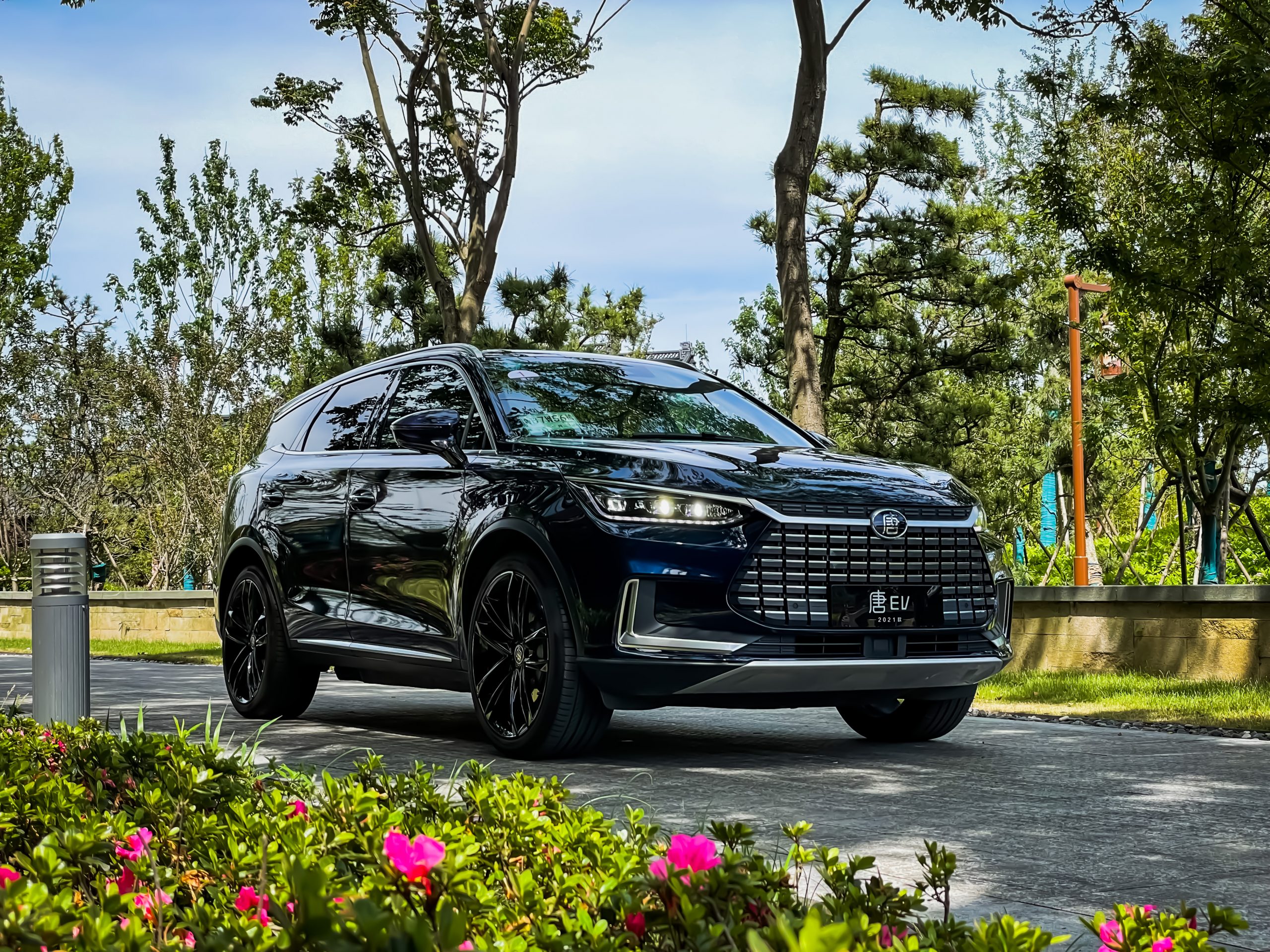Today I experienced the BYD Tang EV, let’s first take a look at the dull parameters.
-
The length, width, and height of the vehicle are 4870, 1950, and 1725 mm, respectively. The wheelbase is 2820 mm. The minimum turning radius is 5.9 m.
-
The top configuration itself has a tire size of 255/50 R20, but the one I drove was equipped with an exaggerated tire size of 265/40 R22.
-
This top-of-the-line model is equipped with AC permanent magnet synchronous motors at the front and rear. The maximum power of the front motor is 180 kW, and the maximum torque is 330 N·m; the maximum power of the rear motor is 200 kW, and the maximum torque is 350 N·m. The system has a maximum combined power of 380 kW and a maximum combined torque of 680 N·m. It can reach 100 km/h in as fast as 4.4 seconds.
-
It is equipped with an 86.4 kWh blade battery pack. The NEDC range of the four-wheel drive version is 505 km, and the front-wheel drive version can reach 565 km.
-
The suspension form is front MacPherson and rear multi-link.
-
The non-commercial vehicle has a lifetime warranty for its three electric system (for the first owner), and the whole vehicle warranty period is 6 years or 150,000 km.
Now let’s talk about my short experience of using it all day today.
-
I didn’t use the physical key throughout the journey. The vehicle is unlocked and started via NFC on the back left mirror of the car. The whole process is very fast. BYD’s mobile app can also remotely control many functions, such as turning on the air conditioning, observing the interior through the camera, unlocking and locking, and even controlling the headlights.
-
This “DiLink 3.0 smart Internet connection system” based on Android is the richest one I have ever seen in a car. Almost all commonly used apps on the mobile phone can be downloaded and used. In split-screen mode, I also started two navigations, both of which can be used normally.
-
It is also this extremely rich car infotainment system that is compatible with the operation gestures of “Android Three Musketeers Keys” or “Full-Screen Display” in some apps, but the consistency is poor.
-
The second row uses a separate control screen, and there is also a 220 V three-interface socket that can output a power of 2.2 kW. The backrest of the seat also supports multi-level adjustment, and even the third row has cup holders and air outlets.
The whole test drive was relatively compact, and there was no opportunity to try out the related driving assistance functions. I am looking forward to driving the Tang EV on a long trip in the future. For now, let’s enjoy the pictures.
“`markdown
“““markdown
Source: [BYD Tang EV Experience Activity]
“`
This article is a translation by ChatGPT of a Chinese report from 42HOW. If you have any questions about it, please email bd@42how.com.
